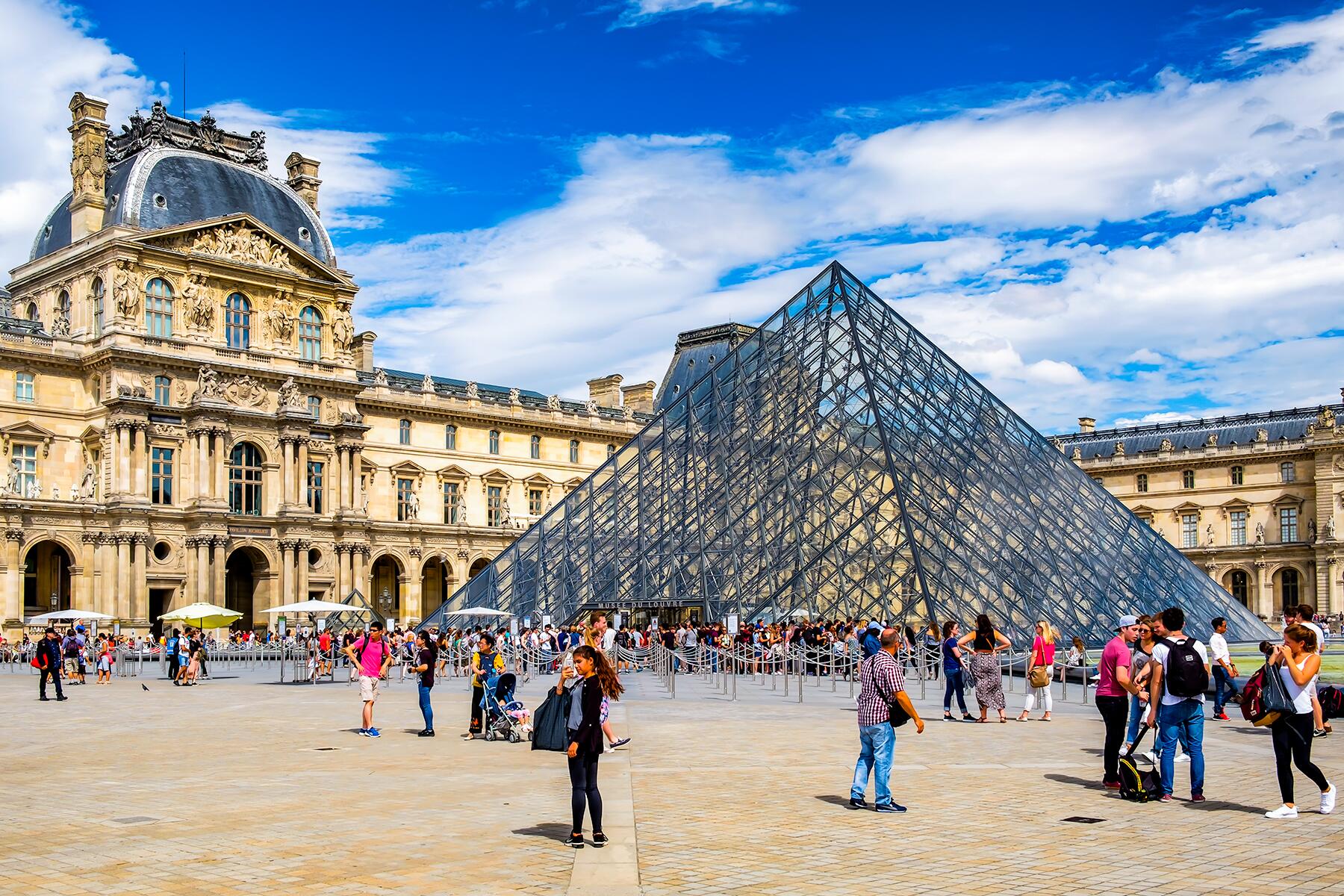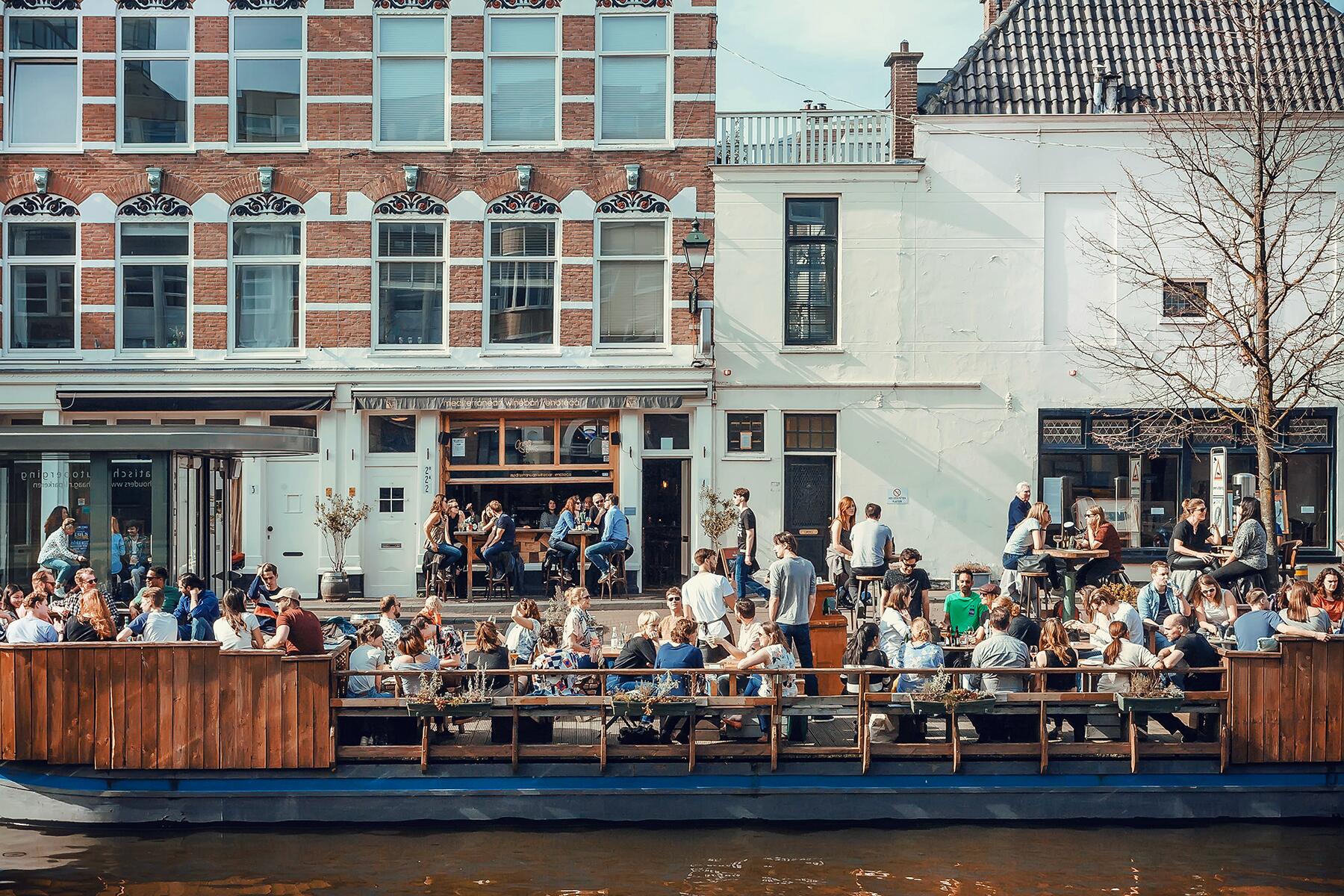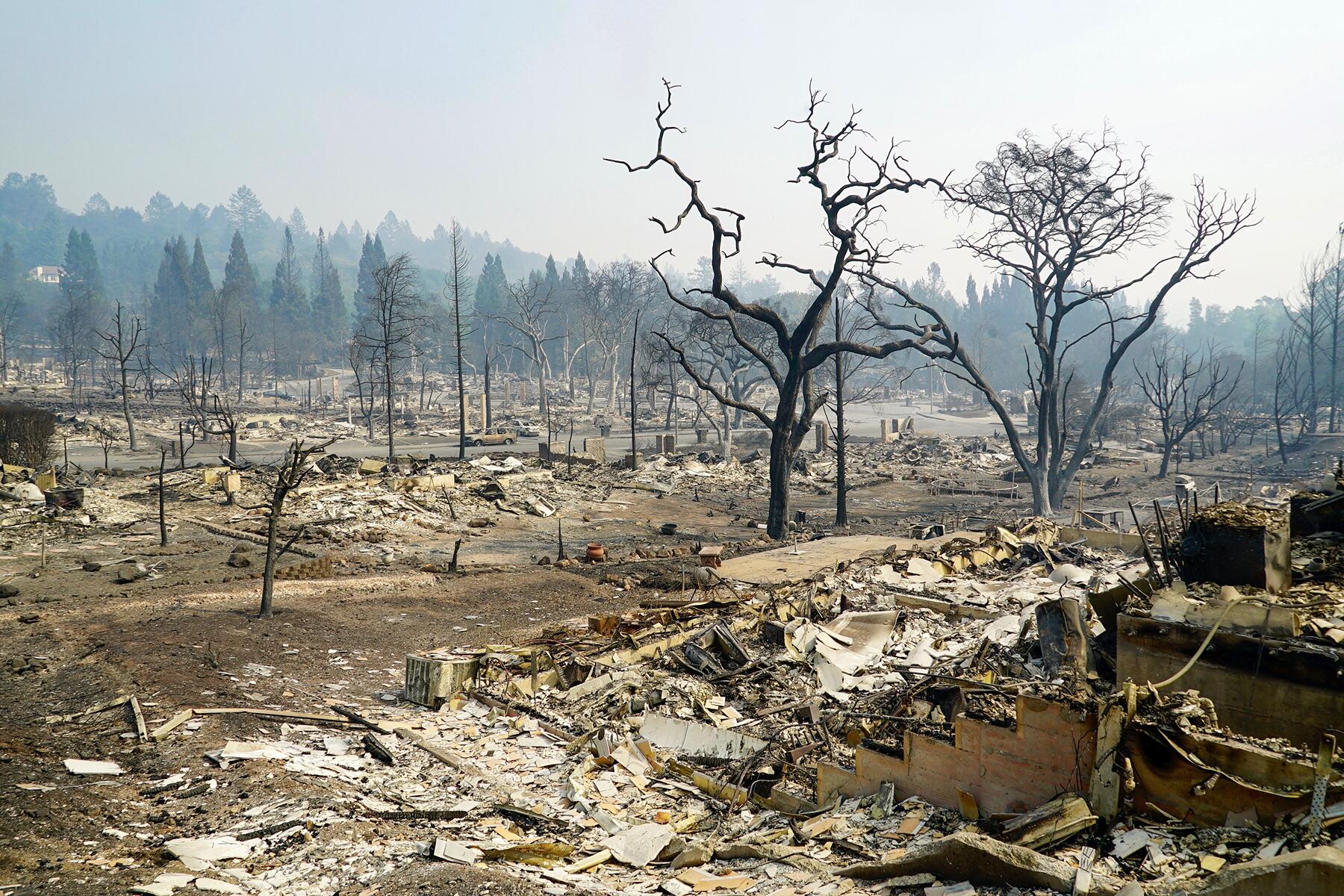- ⁄
- Travel News
- ⁄
- News
Whether you choose to believe it or not, the planet is in a climate crisis.
With a U.S. president who denies the existence of climate change and the ongoing failure of leaders around the world to come up with a plan for a crisis that is already impacting the globe, it’s no surprise that there are still people out there who refuse to accept that climate change is real. If you live in an echo chamber that calls man-made climate impacts “fake news,” it’s pretty easy to ignore the problem—especially if you’re lucky enough to live in a part of the world that isn’t yet feeling much impact from the coming crisis.
But the truth—the real truth, the one proven over and over again by climate scientists, marine biologists, and glaciologists using actual scientific data and evidence—is that climate change is here. And it’s just getting worse. In just the last year, reports from all over the world confirm what experts have been trying to communicate for years: The atmosphere is heating up due to the massive levels of greenhouse gasses created by human activities over the last 150 years.
As carbon dioxide builds in the atmosphere, the whole world warms, melting the ice sheets and glaciers in places like Greenland and Alaska. Freed from the ice, the water is causing sea levels to rise from Venice, Italy, to Rio de Janeiro, Brazil. Increased temperatures and shifts in long-stable seasonal rainfall are causing extreme droughts in California, Australia, and elsewhere, triggering massive fires. In Chennai, India, there was so little water this summer that the municipal taps were shut down for 7 million people. In southern Bolivia, a lake twice the size of Los Angeles just dried up. Heat captured by the water is killing coral on the Great Barrier Reef, the South Pacific, and the Caribbean and causing hurricanes and cyclones to grow larger, stick around longer, and leave more destruction in their wake.
All of these disasters occurring simultaneously around the world are hard to ignore; the fact that they are, in most cases, unprecedented in size and level of devastation, makes it even harder. Yet, while most nations agree that there is a human-induced problem (with the exception of a few key players like the U.S. and Australia), none of them can agree on how to approach it. Last month’s global climate conference, COP25, was declared an utter failure in determining how to move toward goals that will keep the entire world safe.
Whether you choose to believe the facts or not, the climate crisis is already making the world a more inhospitable place and not one of us is safe from its impacts. Here are 17 places around the globe whose struggle against rising seas and flooding, droughts and wildfires, coral bleaching and glacial melting, prove that climate change is very real.
Top Picks for You
Chesapeake Bay and Tangier Island
WHERE: Virginia
Beginning around 250 years ago, small communities planted roots on low, marshy islands in Virginia’s Chesapeake Bay. Today, only two remain. The rest have been consumed by the waves and water which are rising here faster than almost anywhere in the world. The Chesapeake has its sights set next on Tangier. Its small group of islands has already lost over two-thirds of its land mass since 1850 and without major intervention, divine or otherwise, the island will be completely underwater by 2063. Despite already facing challenges that include erosion and flooding, the people of Tangier don’t seem to actually believe in climate change. Nearly every one of the town’s less than 500 residents voted for climate-denier-in-chief Donald Trump in the 2016 election. The rising sea, though, doesn’t care much about politics. Even if the world drastically cuts emissions tomorrow, the Chesapeake would still be coming for Tangier. The question isn’t if, it’s when.
Fact: Tangier Island was home to the British Fort Albion in the Revolutionary War. The remains of the fort were drowned by the sea decades ago.
Cape Town
WHERE: South Africa
Since the dawn of municipal water systems, those of us lucky enough to live in most neighborhoods in major cities just expect that, when you turn on the tap, water will flow. But last year in Cape Town, South Africa the taps almost ran dry and all because the rain the city has depended on for decades just stopped falling—a pattern that’s repeating itself all over the globe as temperatures heat up and the moisture in the atmosphere adjusts accordingly. When severe drought hit in 2015 and dragged on for the next three years, Cape Town’s rain-dependent reservoirs virtually dried up. By February 2018, residents were restricted to using only 50 liters of water a day (about 13 gallons). The city had less than three months before Day Zero when the water was turned off. In the end, the climate threw an epic Hail Mary. The rains returned and the worst drought since 1933 was averted, but probably not for long. As the climate continues to warm, Day Zero continues to lurk just down the road.
Recommended Fodor’s Video
Kiribati
Rising seas aren’t just coming for small island towns, they’re reshaping the entire geopolitical system as we know it. The small island nation of Kiribati will be the first casualty. The ocean has already inundated some low-lying villages and is rapidly seeping into freshwater ponds that communities need to survive. Without that freshwater, nothing will grow, the island will become unlivable, and it will all happen before the end of the century. Combine that with a mass die-off among coral due to the rising temperature of ocean waters and you’ve got a recipe for disaster that’s already half-baked. Ironically, Kiribati’s current president doesn’t believe the crisis is man-made—he’s busily funding programs to build luxury resorts and draw more tourists to its beaches. Ultimately, what the country’s political administration does or doesn’t do is of no consequence. Kiribati will be the first independent nation to fall, and the world will never be the same.
Northern California
WHERE: USA
Wildfires are not new to Northern California. In the long, hot, dry months of September and October, they’ve always pretty much been a given. But over the last five decades, wildfire season has transformed from an occasional rural danger into an almost year-round scourge feeding off water-starved forests and blown by hot, dry winds. Nine of the most destructive fires in California history have occurred since 2015. Things have gotten so bad that the state’s electric company has implemented rolling blackouts in hot, windy conditions, cutting electricity to as many as 2 million people to prevent poorly-maintained equipment from igniting dry vegetation. It used to be Northern California’s relatively cool weather and predictable rainy season provided some protection against the kind of fires burning in hotter, drier conditions in Southern California. But, guess what climate change is doing? Shifting Northern California’s climate patterns to more closely resemble those of the south. As increased heat sucks the moisture out of the air and causes mountain snow to melt earlier, epic droughts like the one California experienced between 2014 and 2017 will keep things crispy and flammable for years to come.
Fact: The most destructive fire in California history took place in November 2018 in northern Butte County. Over 50,000 people were evacuated, nearly 19,000 buildings destroyed, and 85 lives lost. The total bill for the 17-day blaze was $16.5 billion.
Venice
WHERE: Italy
In 2018, when five-foot high tides and heavy rains flooded the streets of Venice, the world was alarmed. Then, just two months ago, the whole thing happened again. Only it was worse this time, with flood waters peaking at six feet above sea level (the second-worst flood event in the last hundred years). Venice’s founders knew the canal-striped city built on marshy islands in 421 A.D. would be vulnerable to the sea but they could never have predicted that the ocean would rise, on average, 0.05-0.07 inches per year between 1900-2000. Or that, by 2016, that rate would more than double to rise 0.13 inches per year. It doesn’t sound like much but those fractions of inches add up, making (once rare) five- to six-foot floods a regular occurrence. Despite mountains of evidence, the Venetian government isn’t helping. Just minutes before water began pouring into their chambers in November, Venice’s town council voted against a measure to fight climate change.
Fact: At the same time Venice is battling rising seas, scientists discovered in the 2000s that it’s also sinking into them due to a combination of plate tectonics and sediment compacting beneath the city—a problem they thought had stopped when the city stopped pumping groundwater from beneath its foundation. Additionally, Venice is also tilting to the east, little by little.
Chennai
WHERE: India
When the water goes, an entire city shuts down. That’s what happened in Chennai, India’s sixth largest city, this summer when its reservoirs started to run dry. For weeks, 7 million people, seven million!—or at least all those but the wealthy—had to stand in line to get water from government tanks. Restaurants and hotels closed and, despite a weeks-long heat-wave that reached 123 degrees and killed 36 people, air-conditioning all over the city was shut down because there was no additional water to run the units. It doesn’t take a genius to recognize these two issues are connected. Heat waves are increasing, not just in intensity but in length. And what doesn’t it do when it’s literally hot enough to fry an egg on the sidewalk? Rain. When there’s no rain, reservoirs don’t fill. And, with no water in the reservoirs—well, you get the picture. The scariest part of it all is that summer of 2019 is just a sample of what’s to come in Chennai. If the current trend of heat and drought continues, by the end of the century human beings will not be able to survive outdoors in the city for more than six hours at a time.
Fact: Chennai’s coastal waters in the Bay of Bengal are just as endangered as the water in its reservoirs. Warming seas and pollution are responsible for the growth of bioluminescent algae blooms that are wreaking havoc on the marine ecosystem and the city’s fishing industry.
Bahamas
Hurricanes are a fact of life in the Caribbean but over the last 40 years, something has changed. It’s not that there are more hurricanes, it’s that those that develop are 45-87 percent more likely to be major Category 4 or 5 storms. The rise of more destructive storms like 2019’s Hurricane Dorian, the most intense storm to hit the Bahamas in recorded history, has everything to do with climate change, according to scientists. Hurricanes feed off heat and, these days, the Caribbean has a lot of it. Not only have water temperatures in the Caribbean Sea been high enough to kill huge portions of its coral reefs, but air temperatures are increasing, too. Combined, hurricanes build faster, drop more water, and blow more intensely; wind gusts from 2019’s Hurricane Dorian were measured at 220 mph. Dorian, alone, can’t prove that climate change is real, it’s true. But it doesn’t have to. Since 2007, the Bahamas has been hit by four of the 12 strongest storms ever recorded in its history.
Solomon Islands
For more than 30,000 years, humans have lived on the low-lying atolls of the South Pacific’s Solomon Islands. Storms were common but predictable and life was, relatively speaking, harmonious. Then came the 20th century and along with it, tides high enough to submerge whole islands and cyclones with no respect for whether “cyclone season” was over or not. The situation has become untenable for many communities across the country and people displaced from the islands’ most endangered areas are already being resettled on higher ground. Within just the next 30 years, thousands more will follow as the nation’s islands are claimed by the Pacific.
Fact: Several other South Pacific nations are in the same sinking boat as the Solomon Islands. By mid-century, large portions of the Marshall Islands, Vanuatu, and Kiribati will be inundated by the rising sea.
Great Barrier Reef
WHERE: Australia
Coral reefs are like the forests of the ocean. They provide shelter for a wide variety of species, produce nitrogen and other nutrients that keep the sea healthy, and fix carbon. They even protect habitats on land by mitigating the impacts of powerful waves and tropical storms. And just like widespread forest destruction spells doom for the Earth, the widespread destruction of coral reefs spells doom for the oceans. So, the fact that the Great Barrier Reef, the largest coral reef in the world, is in crisis kind of presents a problem. The organisms are sensitive enough that all it takes is an increase in temperature of just one degree Celsius to result in catastrophic bleaching events that kill it. The two worst episodes marine biologists have ever seen took place on the Great Barrier Reef in 2016 and 2017. With temperatures rising 40% faster than scientists were predicting back in the ‘90s, though, these back-to-back bleaching disasters won’t be the last.
Glacier Bay National Park
WHERE: Alaska
When Joseph Whidbey first visited Alaska’s Glacier Bay in the late 19th century, he found it strangled by tidewater glaciers. By the 1990s, they had receded more than 60 miles. Some had lost so much ice that they could no longer even be called glaciers. What’s going on at Glacier Bay is going on in frozen regions all over the world. In Alaska, alone, 95% of the state’s approximately 100,000 glaciers are in the process of thinning, stagnating, or retreating because air and water temperatures there are increasing at more than twice the rate as the rest of the United States. On average, the ice is receding up to 60 feet per year. It’s not just a problem for the ice, Glacier Bay’s whole ecosystem is under threat as changes in temperature cause spring to creep forward, throwing off the fragile balance between plants and hibernating animals.
Fact: While the vast majority of Glacier Bay’s ice is retreating, the national park is one of the few places in the world where healthy glaciers still exist. At least one of them, the mile-wide, 250-foot high Johns Hopkins Glacier, is actually slowly advancing.
Isle de Jean Charles
WHERE: Louisiana
A Native American community in Louisiana will be the first of the climate refugees in the U.S. It won’t happen at the end of the century or even 50 years from now. It’s already begun: in 2016, the entire community of Isle de Jean Charles, the home of the Biloxi-Chitimacha-Choctaw Indians, began a process of resettlement to higher ground. Back in the 1830s, when the tribe settled on Jean Charles to escape the Trail of Tears, the island was a robust five miles wide and 11 miles long. Now, a combination of rising seas, erosion of land due to storms like Hurricane Katrina, and canal dredging by oil and shipping companies have left Jean Charles just a quarter mile wide and two miles long. That it is an Indigenous community that is the first to be resettled due to climate change is no accident. From Alaska to Louisiana, Indigenous peoples are on the front lines of the crisis.
Egypt
The Nile gave birth to the ancient Egyptian civilization and since then the river’s blue waters and regular floods have sustained millions in Egypt for thousands of years. In the 21st century, that’s all starting to change. With extreme heat and drought ravaging the country, the Nile is drying up and as it recedes, salt water from rising seas is taking its place. Since most of the country’s agriculture depends on the Nile and crops can’t grow with an excess of salt, food shortages will be impossible to avoid. Meanwhile, the ancient port city of Alexandria is suffering the effects of rising seas like never before. The city and rest of the Nile Delta could be inundated by the end of the century, impacting 5.7 million people. Oh, and let’s not forget that temperatures are skyrocketing in Egypt, causing punishing heat waves that are literally killing people. The past three years in the country have been the hottest on record. By mid-century, policy experts believe that countries in throughout the Middle East and parts of North Africa will regularly experience temperatures between 140-160 degrees. The climate crisis is already well on its way to transforming a land once celebrated for its ecological bounty into one of the most inhospitable places on Earth.
Greenland
Many climate scientists consider Greenland “ground zero” for the crisis. The massive island is virtually covered in ice, 656,000 square miles of it to be exact. But because the heat waves plaguing the world over the last several years are more intense near the poles, Greenland’s ice is melting faster than anyone could have predicted; in just a single 24-hour period in August, 11 billion tons were lost. All over the island, ice is thinning so much that traditional activities that have sustained Greenland’s Inuit community for centuries like ice-fishing and dog-sledding are becoming not just dangerous but deadly. Greenland’s melting ice sheets are a problem for the entire world. If they disappear, the sea will rise more than 20 feet, spelling the end for major coastal cities like New York and Shanghai.
Fact: Historically, sled dogs have played an important role in Greenland’s culture but as the snow and ice become less predictable, people are abandoning the practice in larger and larger numbers. Between 1998 and 2016, the number of sled dogs in the country dropped by more than half, from over 36,000 to just around 14,000.
Lake Poopó
WHERE: Bolivia
In 2015, Bolivia’s Lake Poopó, a body of water twice the size of Los Angeles, virtually disappeared and every single one of the factors leading to the lake’s demise was caused by human hands. Rising temperatures in the region, which have increased by one degree Celsius in the last hundred years due to human-produced greenhouse gasses, have caused the shallow Poopó to evaporate more quickly than ever before. Extended drought in the region has prevented rainfall from replenishing the lake, leaving the Poopó to rely on water from the Desaguadero River. If man-made climate changes were the only stress facing the Poopó, it might have survived. But as the changing climate works to suck the lake dry, so are water managers, who have been using the river as a piggy bank for local mining and agricultural operations. By the time the Desaguadero reaches the Poopó it’s little more than a trickle. Four years later, the lake still hasn’t recovered and there isn’t much hope that it ever will. That’s been a disaster for local Indigenous communities who were dependent on the Poopó for centuries. Only about 800 Urus-Muratos people are now left on the lake’s shores. The rest have become Bolivia’s first climate refugees.
Fact: Half a world away in Central Asia, the Aral Sea, the fourth largest sea in the world, began to disappear in 2000. By 2014, it was almost completely gone, taking local economies down with it.
Lake Erie
WHERE: USA and Canada
Like monsters from the deep, toxic algal blooms are making themselves right at home in Lake Erie, the smallest of North America’s Great Lakes. The blue-green organisms which cause liver damage, numbness, dizziness, and vomiting have been appearing in larger and larger numbers since 2010 but last August’s bloom was the worst so far, a 700 square mile patch of toxic goo. Algal blooms are directly linked to the chemicals and fertilizers agricultural operations are washing into Lake Erie. The more runoff, the larger the bloom and the more rain there is to move agricultural chemicals into waterways, the more runoff there is. With temperatures on the rise in the northern Midwest, more rain will fall. Climate change may not be the source of algal blooms but without it, the runoffs causing them would be easier to contain. Instead, the toxic free-for-all is just beginning to pick up speed.
Fact: Warming temperatures and agricultural chemical run-offs are also causing country-sized algal blooms in the Gulf of Mexico and China’s Yellow Sea.
New South Wales and Queensland
WHERE: Australia
Australia is on fire and the blazes are larger and hotter than the country has ever seen before. The hotter and drier conditions become, the more likely fires are to ignite. And ignite they have, blanketing Sydney in toxic smoke that, in some places measured 11 times the level of “hazardous.” Wild koalas, the cuddliest of Australia’s bush animals aren’t yet extinct, but with as many as 25,000 killed in blazes over the last two months, their future is now uncertain, too. It’s estimated that as many as one billion animals have perished in the fires, in what’s being called an “animal apocalypse.” Australia’s Prime Minister Scott Morrison is refusing to acknowledge the connection between the bushfires and the climate crisis—he says Australia’s always had fires. But even Morrison can admit that 2019 was hot, hotter even than 2013, when temperatures smashed all previous records.
Fact: Drought is the new normal in Australia. Since 2003, only four years—2013 to 2016—have been drought-free. The current drought in Queensland and New South Wales has been ongoing since 2017.
Rio de Janeiro
WHERE: Brazil
In South America, the dubious prize for which city will be most affected by climate change goes to Rio de Janeiro where average temperatures have risen one degree Celsius in the last five years. Sea levels are rising, too, even faster than they are in other seaside cities like Buenos Aires and Lima. In just five years, the water level has gone up 5.5 inches. Over the next 60 years, that could increase by almost six times, triggering catastrophic flooding in low-lying areas of the city. Meanwhile, Rio will heat up like nobody’s business and rainfall will be cut in half. Compounding the problem is an unprecedented level of destruction in Brazil’s Amazon Rainforest, which President Jair Bolsonaro wholeheartedly supports. Called the “lungs of the planet,” the Amazon absorbs around two billion tons of the world’s carbon annually. As it is burned for new agricultural and industrial projects (which, by the way, is currently releasing millions of tons of carbon into the atmosphere daily) the carbon dioxide will stick around in the atmosphere, magnifying all of the effects of climate change in Rio and around the world.




